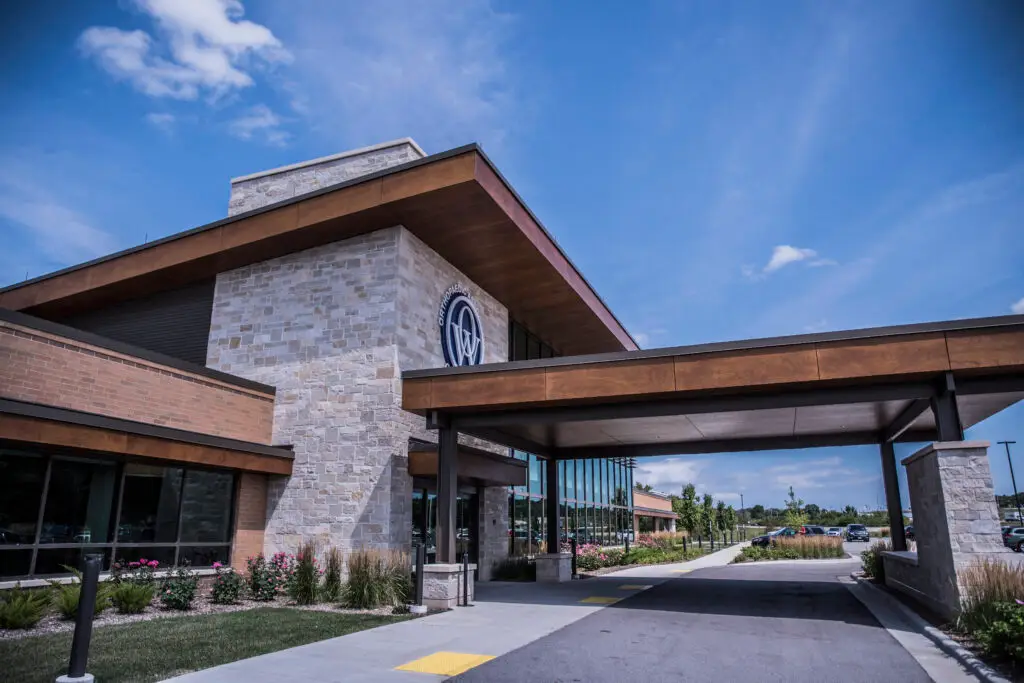HIP JOINT REPLACEMENT
Surgical procedures for repairing torn ACLs and returning to athletic activity.
Hip pain can disrupt your ability to move comfortably, sleep soundly, and enjoy your daily life. At Orthopaedic Associates of Wisconsin, we specialize in hip replacement surgery that restores mobility and reduces pain—right here in Wisconsin. Our experienced team is committed to helping you move forward with confidence.
What Is a Hip Replacement?
A hip replacement, or total hip arthroplasty, is a surgical procedure where a damaged hip joint is replaced with a prosthetic implant. It’s typically recommended when pain and mobility issues interfere with your quality of life and conservative treatments no longer provide relief.
Conditions That Often Lead to Hip Replacement
Osteoarthritis
Rheumatoid arthritis
Avascular necrosis
Signs You May Need Hip Replacement Surgery
If you’re experiencing any of the following, you may be a candidate for surgery:
Persistent or worsening hip pain
Difficulty walking, climbing stairs, or bending
Hip stiffness that limits movement
Pain that interrupts your sleep
Limited relief from medication, injections, or physical therapy
Our Hip Replacement Specialists in Wisconsin
Anterior (Direct Anterior) Hip Replacement
At Orthopaedic Associates of Wisconsin, our surgeons specialize in anterior hip replacement, also called the direct anterior approach. This minimally invasive technique allows your surgeon to access the hip joint through a small incision at the front of the hip, gently moving muscles aside instead of cutting them. This “muscle-sparing” method can make a big difference in recovery.
Benefits of Anterior Hip Replacement
Patients often choose the anterior approach because it offers:
Faster recovery and mobility – many patients walk the same day as surgery.
Less pain after surgery thanks to reduced muscle trauma.
Lower risk of hip dislocation compared to traditional techniques.
Smaller incision and less scarring, which may improve comfort and confidence.
Is the Anterior Approach Right for You?
The best way to know if you are a candidate for anterior hip replacement is to schedule a consultation with one of our hip replacement surgeons in Wisconsin. Our team will review your health, lifestyle, and goals to recommend the best surgical option for long-term success.
At Orthopaedic Associates of Wisconsin, our board-certified, fellowship-trained surgeons are experts in hip replacement surgery. We use the latest techniques, including minimally invasive and anterior approaches, to deliver precise results and a faster, more comfortable recovery.
We also offer:
Personalized, evidence-based treatment plans
Streamlined care from consultation through recovery
What to Expect: Procedure and Recovery Timeline
Before Surgery:
Medical evaluation and imaging
Pre-surgical education and planning
During Surgery:
Typically 1–2 hours in duration
Performed under general or spinal anesthesia
Some patients go home the same day; others stay overnight
After Surgery:
Physical therapy begins shortly after surgery
Most patients resume driving within 2–4 weeks
Light activities often resume within 6–12 weeks
Full recovery may take up to 6 months
Locations Across Wisconsin
Orthopaedic Associates of Wisconsin offers hip replacement care at several convenient locations throughout the region. Check out our Locations page or call us to schedule at the location nearest you.
OUR HIP REPLACEMENT SPECIALISTS
Matthew R. Bong, MD
Specialties:
Hip, Knee, Joint Replacement (Hip & Knee)
William A. Davies, MD
Specialties:
Hip, Knee, Joint Replacement (Hip & Knee)
Daniel P. Holub, MD
Specialties:
Hip, Knee, Joint Replacement (Hip & Knee)
Mick Kelly, MD
Specialties:
Hip, Knee, Joint Replacement (Hip & Knee)
Mitchell Klement, MD
Specialties:
Hip, Knee, Joint Replacement (Hip & Knee)
Steven J. Merkow, MD
Specialties:
Hip, Knee, Shoulder & Sports Medicine, Joint Replacement (Hip & Knee)
Scott B. Schneider, MD
Specialties:
Hip, Knee, Joint Replacement (Hip & Knee)
Ready to Take the Next Step Toward Relief?
If you’re experiencing hip pain, discomfort, or limited mobility, our orthopedic specialists are here to help. With advanced diagnostic tools and personalized treatment plans, we’re committed to getting you back on your feet. Request an appointment today and take the first step toward feeling better.








